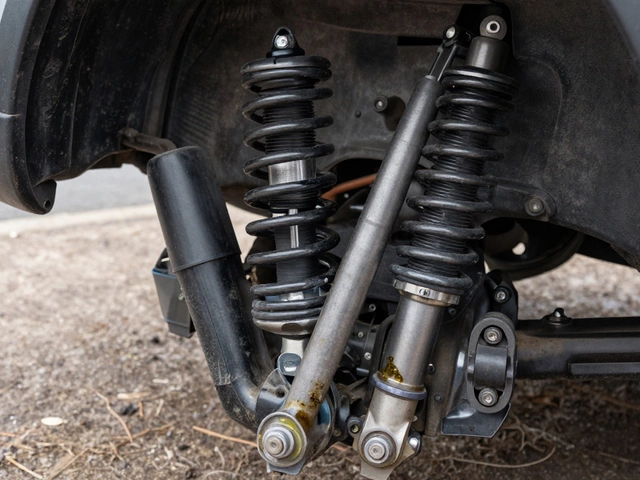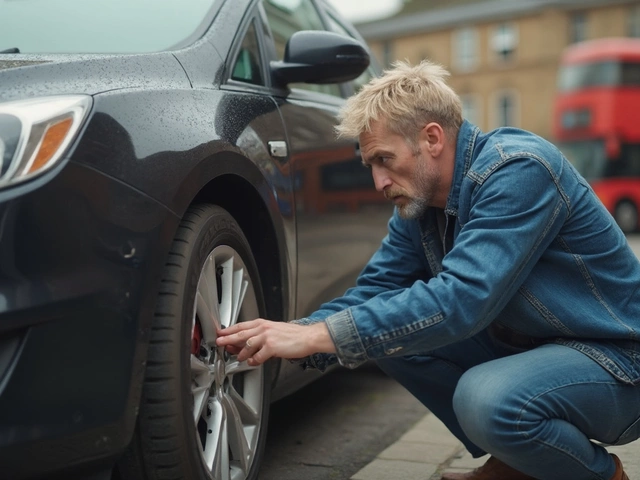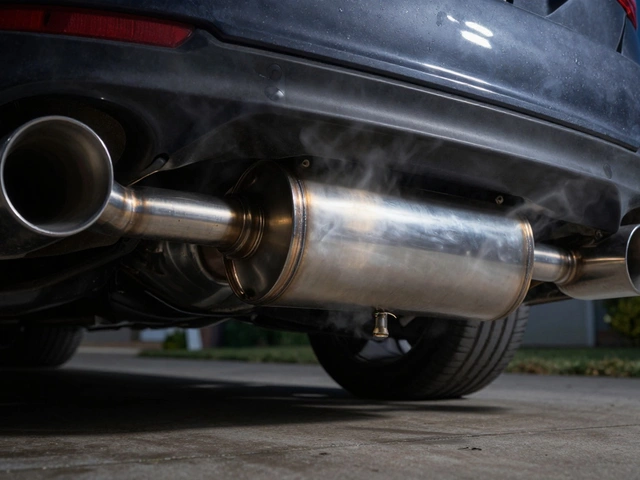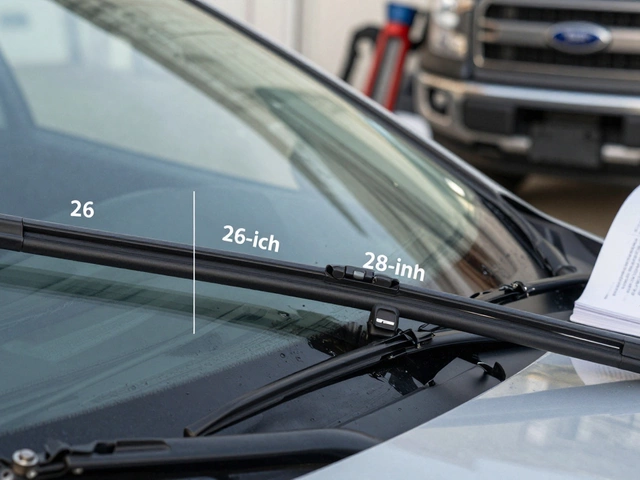Alloy wheels add a touch of sophistication to any vehicle while offering superior performance. But just how long these gleaming wheels last can often depend on a variety of factors. Whether you're driving through city streets or venturing on rugged paths, understanding what influences their lifespan can help you get the most out of your investment.
In this article, we'll explore the factors that play a role in how long alloy wheels can last on your vehicle. From environmental conditions to road habits, multiple elements contribute to their wear and tear. We'll also dish out some practical tips to help you maintain and extend the life of your wheels.
By recognizing the signs of when your wheels need attention or replacement, you can ensure a smoother and safer ride. Let's dive in and discover how to keep those wheels turning, both in top condition and style!
- Factors Affecting Wheel Lifespan
- Common Signs of Wear and Tear
- Maintenance Tips for Longevity
- Knowing When to Replace Your Wheels
Factors Affecting Wheel Lifespan
When pondering the longevity of alloy wheels, it's essential to understand the numerous influences that determine their durability. First and foremost is the quality of the materials used in manufacturing these wheels. High-quality alloys often consist of aluminum mixed with small quantities of other metals, like magnesium or nickel, to enhance strength without adding extra weight. The blend of materials ensures robustness, which is crucial when faced with the myriad challenges of daily driving.
Another critical factor lies in the driving conditions one encounters regularly. Urban dwellers may face different obstacles compared to rural drivers. For instance, city roads are notorious for potholes and uneven pavements that can take a toll on your wheels. Conversely, country roads, while seemingly peaceful, can present their own challenges with gravel, dust, and mud. Regardless of your frequent paths, the terrain will heavily influence the lifespan of your wheels.
The style of driving can't be overlooked either. Aggressive driving, characterized by rapid accelerations, abrupt stops, and swift turns, exponentially increases wear. Each of these actions generates additional friction between the tires and the road, which over time, strains the wheel's lifespan. In contrast, smooth and measured driving leads to less strain and longer-lasting wheels. It's not just about moderation, it's about consistency in how you handle the steering wheel.
Next is the influence of weather conditions. Alloy wheels can face significant wear and tear if frequently exposed to adverse weather. Consider climates with heavy snowfall where road salt is regularly used. Salt, while effective for melting ice, is corrosive and can damage the metal over time, creating potential structural issues. Similarly, coastal areas with salty air can accelerate corrosion if wheels aren't adequately maintained.
"Proper care and customization can significantly bolster wheel longevity," says John Stevenson, a renowned automotive expert. "It's the imperfections in maintenance that catch up to us eventually."
Proper maintenance routines also play a defining role. Regular washing of the wheels to remove built-up grime, salt, and brake dust helps maintain their integrity. Applying sealant or wax not only offers a protective layer but also makes future cleanings easier. And while maintenance is pivotal, regular inspection for cracks or damage keeps small problems from escalating into larger, costly repairs.
Finally, the weight load that a vehicle carries regularly can affect wheel lifespan. Overloading a car beyond its capacity places undue stress on the wheels, risking deformation or cracking. It's worth noting that understanding your vehicle's weight capacity can save you substantial expenses in wheel replacements. Vigilance in observing these factors and acting appropriately can dramatically extend the life of your alloy wheels, ensuring they remain an asset rather than a liability.
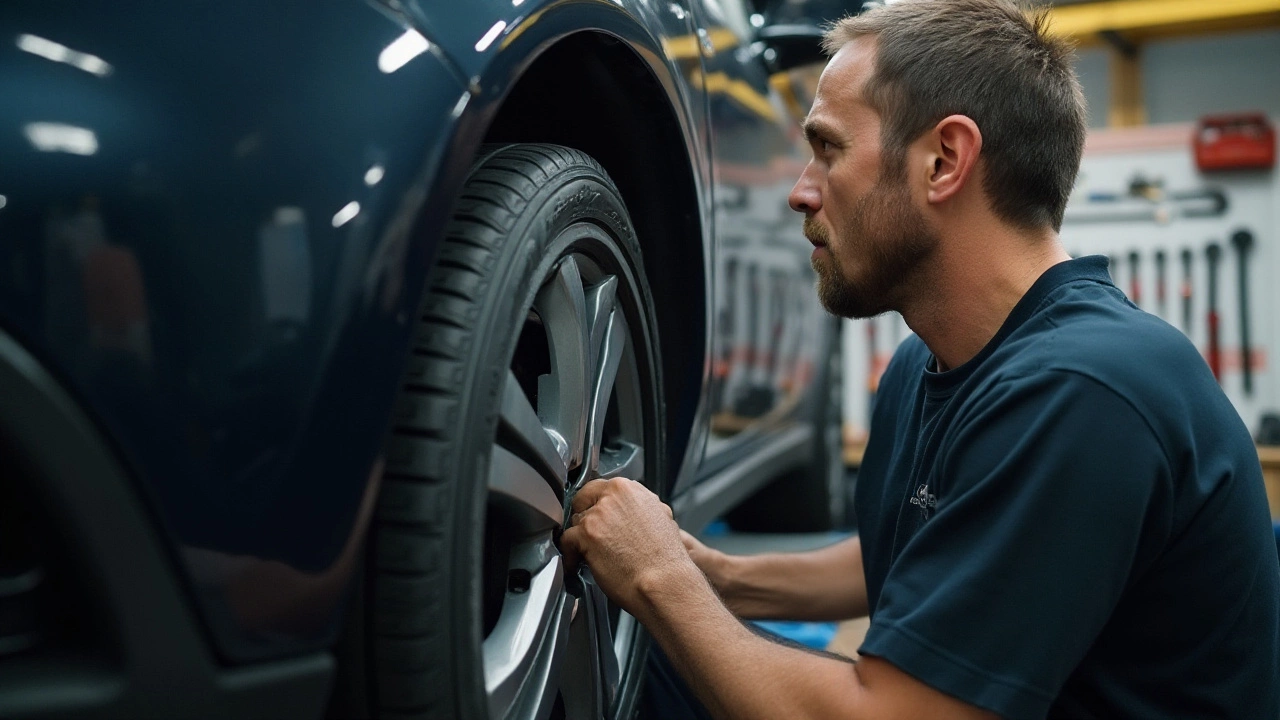
Common Signs of Wear and Tear
As time goes on, even the most sturdy alloy wheels start showing signs of wear and tear. These indicators are crucial for assessing the overall condition of your wheels. Initially, these might just look like minor scratches or chips on the surface. However, ignoring these early signs can lead to more significant problems down the road. The most common signs include scratches, scuffs, and even discoloration. Discoloration often happens due to exposure to harsh chemicals and brake dust that accumulate over time. The severity of these symptoms can vary, but they all share one trait: if left unchecked, they will worsen, potentially affecting the vehicle’s performance.
One of the subtler signs of wheel wear is the development of cracks, often difficult to spot without a keen eye. These usually form around the hub and spokes, where the stress of driving is most intense. Regularly inspecting your wheels for such cracks can save you from larger expenses later. It's not all about the metalwork; pay attention to your car’s handling as well. If you sense unusual vibrations or a lack of smoothness when driving, your wheels might be needing more than just a cursory glance. In some cases, uneven tire wear can also signify wheel issues. Such wear patterns often suggest misalignment or even structural damage to the wheel.
Noise is another less evident sign. Any unusual sounds coming from the wheel region, like grinding or creaking, could indicate that your wheel lifespan might be reaching its limit. Frequent exposure to rough surfaces, potholes, and debris can accelerate these issues. According to a study conducted by the Automobile Association, poorly maintained roads contribute to up to 40% of wheel wear issues, which is quite significant when considering proactive maintenance.
"Alloy wheels often face the brunt of our roads. Noticing the early signs allows for preventive measures that can prevent costly repairs," explains John Miller, a leading automotive consultant.
Visual Inspection Tips
To effectively manage these wear and tear signs, regular visual inspection is essential. Start by cleaning the wheels to see clearly any surface-level issues. Check the areas around the lug nuts and edges, as these spots often experience more stress. Also, look for any signs of warping. If there's anything out of the ordinary, it’s better to consult a professional who might use specialized equipment to detect micro-cracks unseen by the naked eye. Employing these practices will not only help ensure a smoother ride but will also significantly extend the life of your alloy wheels.

Maintenance Tips for Longevity
Proper maintenance plays a pivotal role in prolonging the life of your alloy wheels. Consistent care starts with regular cleaning routines. These wheels, admired for their aesthetic appeal, can accumulate road grime, brake dust, and even salt, especially during winter months. A mixture of mild soap and water, used with a soft brush or sponge, can work wonders in removing dirt without scratching the surface. Opt for a dedicated wheel cleaner occasionally to combat tougher stains. Avoid harsh chemicals which could tarnish the smooth finish of your wheel over time.
Routine visual inspections are crucial for detecting early signs of wear or damage. Look for scratches, dents, or any irregularities that might compromise the wheel's integrity. Parking too close to curbs often results in unsightly curb rash, which can be mitigated by careful driving habits. Identifying issues early allows for minor repairs rather than expensive replacements. Regularly checking tire and wheel balance goes a long way to ensure a smooth ride and minimize stress on the wheels.
Lubrication of wheel parts may often be overlooked, but it's essential for corrosion prevention. A simple application of anti-rust spray on the wheel's inner components protects against rust buildup and extends wheel life. In humid or coastal areas, where salt exposure is high, this step becomes especially critical. Keeping an eye on tire pressure not only affects positive driving dynamics but also reduces undue stress on the alloy wheels. Correct tire inflation helps distribute vehicle weight evenly, preventing any sharp edges from damaging the wheels.
Professional inspection and servicing are invaluable in maintaining those durable alloy wheels. Scheduling an expert check-up, ideally at least twice a year, ensures wheel alignment and balance adjustments are done precisely. A professional might also recommend protective wheel coatings that resist stains and corrosion.
"The longevity of your wheels often reflects the attention they get," says John Richards, Chief Mechanic at AutoCare Solutions. "Preventive measures and timely interventions determine if your alloy wheels stand the test of time."
Nelson's Law of Road Enthusiasts often states, "A polished wheel is a happy wheel." And while that may humorously enthuse car aficionados, there's truth in the care and pride it suggests. Remember, the glimmering shine of alloy wheels not only speaks of aesthetic appeal; it's a silent testament to careful maintenance. Indeed, such attention extends not just a wheel's lifespan but also its timeless allure.
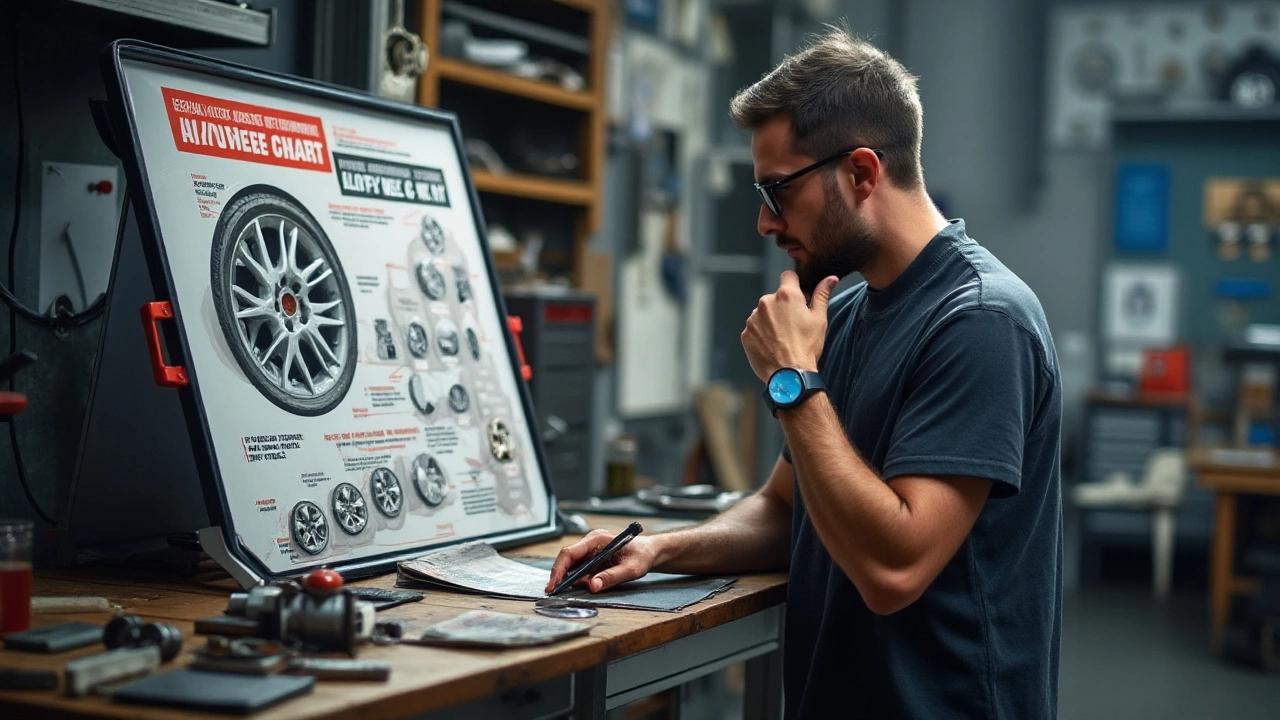
Knowing When to Replace Your Wheels
Deciding when to replace your alloy wheels can save you from headaches and ensure safety on the road. You know it’s time to swap them out not just by the calendar but by closely observing their condition and performance. One of the clearest signs is visible damage, which might include cracks, severe curb rash, or bends. Often, hitting a pothole or an unexpected impact can lead to such issues, which compromise not only the aesthetic but, more importantly, their structural integrity. When wheels aren't perfectly round or have developed cracks, your tires can't sit flat against the road, which affects control and grip.
Your wheel lifespan is also linked to how well they're balanced. An unbalanced wheel or improper alignment leads to uneven tire wear, not to mention a less-than-smooth ride. If you find yourself constantly correcting steering wobble or unusual vibrations, it might not be your tires but the wheels themselves causing the trouble. Speaking of stability, if you see rust or corrosion—a specific concern with alloy wheels, even though they're less susceptible than steel—you might want to reassess their condition. Corrosion can slowly eat away, undermining the wheel's strength without you realizing it.
Changes in vehicle behavior can be subtle, but significant. If braking efficiency has dropped, or there are altered handling characteristics during normal driving, it’s crucial to have the alloy wheels checked. Notably, poor braking can sometimes be attributed to warped wheels that no longer allow contact surfaces to maintain even pressure on the brakes. Additionally, regular wear and tear usually change the wheels' dynamics. Keeping an eye on these behavioral changes can be an essential practice. While aesthetics undoubtedly play a role in the decision to replace, understanding these performance cues places safety at the forefront.
Maintenance of aesthetic and performance often comes down to regular inspection and professional services. Having wheels inspected periodically by a qualified mechanic can help detect issues you might overlook. Using this proactive approach, one ensures that the vehicle remains safe for both fast highway travel and slow city commutes. Regular check-ups allow occasional repairs to be made, sometimes extending the lifespan beyond what one's driving habits might suggest.
"Replacing wheels isn't just about looks; it's about making sure your vehicle performs at its peak," says automotive expert Jamie Clout. Understanding the importance of timely replacement can prevent larger issues down the road.
So, if you're noticing the signs mentioned, consulting with a professional is the best course of action. Vehicle components work in tandem, and wheels are no exception. They play a significant role in the driving experience and vehicle safety. By keeping them in check, you not only extend their lifespan but guarantee a safer, more enjoyable journey every time you hit the road.


